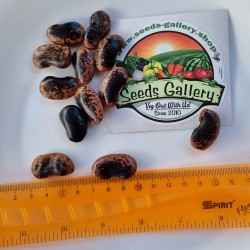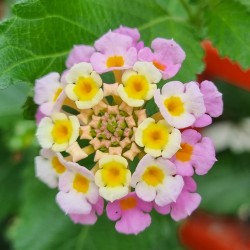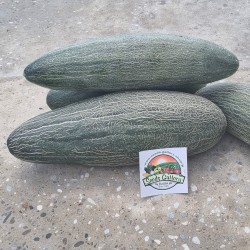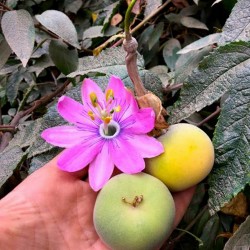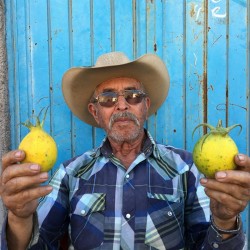
هذا النبات له ثمار عملاقة
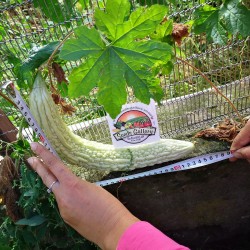
معضوضة كرمية الأوراق عملاق...
السعر
5.75 €
SKU: V 7 G
Seeds Gallery Com,
5/
5
<!DOCTYPE html>
<html>
<head>
<meta http-equiv="Content-Type" content="text/html; charset=UTF-8" />
</head>
<body>
<h2><strong>معضوضة كرمية الأوراق عملاق بذور</strong></h2>
<h2><span style="color: #ff0000;"><strong>ثمن حزمة من 5 بذور.</strong></span></h2>
<p>هذا أكبر شمام مر موجود ، يصل طوله إلى أكثر من 45 سم وعرضه 6 سم! بعد عدة سنوات ، تمكنا من استخراج أكبر قدر من الفاكهة وتخزينها وزرعها ، وأخيراً للعام الثالث على التوالي نحصل على نفس الثمار الضخمة حقًا!</p>
<p>معضوضة كرمية الأوراق أو القرع المر (الاسم العلمي: Momordica charantia) هي نوع من النباتات تتبع جنس المعضوضة من الفصيلة القرعية. ونبات عشبي حولي زاحف يعرف شعبياً بعدة أسماء مثل الكمثرى البلسمية والخيار الكوري، بالإنجليزية معضوضة كرمية الأوراق ويعد هذا من النباتات المشهورة التي ثماره تشبه الكوسا أو الخيار ولكنه يبرز على سطحها الخارجي نتوءات كثيرة وتتميز بمذاقها المر.</p>
<p>If the Balsam Pear did not exist a pharmaceutical company would invent it. In fact, there have been some ten studies published this past year about it, the latest as of this writing in February 2008 in the Journal of Food Biochemistry about its potential in diabetes treatment.</p>
<p>A very common, bitter vegetable in Asian cuisine, the Balsam Pear, Momordica charantia, is a natural drug store for diabetics and others. It’s not a pear at all but a fruiting gourd and vine that smells like an old, well-used gym shoe. Don’t say you weren’t warned.</p>
<div>The warty gourd is edible when green (and cooked) but turns toxic when orange ripe. It then splits characteristically into three parts, revealing red arils (fleshy seed covers). The ripe seeds inside the arils and orange flesh of the gourd are toxic and can make one violently lose fluids from both ends, and induce abortions. The red arils around the seeds, however, are edible. And notice this: The arils are 96% lycopene, which gives them their color. Just remember to spit out the seed from each aril.</div>
<div>M. charantia is found Connecticut south to Florida, west to Texas, also Puerto Rico and the Hawaiian Islands. Incidentally, the bitter melon has twice the potassium of bananas and is also rich in vitamin A and C.</div>
<div> </div>
<div>The Latin genus name, Momordica, (mo-MOR-dee-ka) means “to bite,” and refers to the jagged edges of the leaves, which appear as if they have been bitten. Charantia (char-AN-tee-ah) the species’ name, comes from Greek meaning beautiful flower. It’s native to tropical regions of the world though no one knows where it came from originally. Gray’s four-inch thick Manual of Botany, started in 1850 and revised in 1950, makes no mention of M. charantia in the United States but it is currently a serious crop weed in Florida and to 21 other crops around the world, bananas to soybeans. It’s a late comer to Florida or Gray was in the dark about it. In the Amazon, and as far away as India, it is used very much by local populations for food and medicine. Apparently a dynamic chemical factory, the M. charantia is being tested for treatment against cancer — leukemia in particular — AIDS, as an analgesic, and to moderate insulin resistance. It is often called the vegetable insulin. It does not increase insulin secretion but “speeds up carbohydrate use of the cells by affecting membrane lipids.” Seems like the smelly gym shoe hanging on the fence has a great future. But, it is not for everyone: Don’t eat the vegetable if you’re hypoglycemic or pregnant. In diabetics it can lower blood sugar too effectively. It also reduces fertility in men and women. And, it contains vicine. That can cause favism in people who have a variant glucose-6-phosphate dehydrogenase. (I presume if you don’t know what that is you don’t have it. Favism is a severe reaction to fava beans and or their pollen. Occurs most often in Mediterranean men.)</div>
<div>Cultivated versions of the M. charantia, also called Bitter Gourd or Wild Balsam Apple, are found in most Asian markets, and they, too, smell like an old gym shoe. The odor, thankfully, almost all goes away when cooked and the bitterness moderates, but does not go away. If you are not yet brave enough to pick your own, you can buy some or grow it yourself. There are many varieties and numerous recipes are on the Internet. The M. charantia is indeed bitter. Some cut up the vegetable and soak it in water, or salted water and or blanch it to reduce the bitterness.</div>
<div>While I have never seen an Oriental family picking M. charantia off local fences here in Florida, I have seen many Hispanic families doing so. Dr. Julia Morton, a plant professor in south Florida, says besides the green fruit, the young leaves when cooked and drained are also edible and nutritious, with iron, phosphorous, calcium and vitamin C. I have never managed to get past the locker room bouquet to toss ‘em in a pot, and the fruit is just too bitter for me to enjoy. The ripe fruit pulp has been used as a soap substitute, which should give you some idea of the flavor. In India and Africa the cooked leaves are canned like spinach. The fragrant flowers can be used as seasoning when cooking.</div>
<div> </div>
<div>Incidentally, if you have a glut of green Bitter Gourds, you can slice them, partially boil them with salted water, then dry them, sun or otherwise. They will last for several months. You can then fry them and use as you like. Also, drinking the fresh bitter juice is recommended by some naturopaths. That ain’t going to be easy, it’s really bitter…. much easier to tell someone to do it than do it yourself.</div>
<div> </div>
<div>REMEMBER: No part of the Momordica charantia is ever to be eaten raw, except for the red arils (and remember to spit the seeds out.) No part, other than the arils, is ever to be eaten when ripe, which is when it is turning from green to yellow to orange. Do not eat the yellow or orange fruit raw or cooked. It is toxic. Also, the green fruit is suspected in the poisoning of dogs and pigs.</div>
<div> </div>
<div>Relatives: Momordica balsamina, which has longer spines on the fruit and can ripen to red, grows only in St. Lucie County in Florida and only a smattering of places in the southern U.S. M. balsamina fruit can be pickled or after soaking used as a cooked vegetable. Young shoots and tendrils are boiled as a green. The seeds are eaten. Momordica cochinchinensis produces a huge round fruit that is red when ripe. Young fruit boiled, not as bitter as M. charantia. Momordica dioica, small and roundish, is more esteemed than the rest. It is not bitter but sweet. Fruits, shoots, leaves and roots are boiled for food. There are also at least seven commercial cultivars of the Momordica gourds</div>
<div>IDENTIFICATION: Momordica charantia: A slender, climbing annual vine to 18 feet with long-stalked leaves and yellow flowers where the leaf meets the stem. Young fruit emerald green turning to orange when ripe. At maturity, fruit splits into three irregular parts that curl backwards showing many reddish-brown or white seeds encased in scarlet arils.</div>
<div> </div>
<div>TIME OF YEAR: Fruit, summer and fall in warm climates, fall in northern climes.</div>
<div> </div>
<div>ENVIRONMENT: Love to climb, found in hammocks, disturbed sites, turf and ornamental landscapes, and citrus groves . It seems to be the most common vine on chain link fences in Florida.</div>
<div> </div>
<div>METHOD OF PREPARATION: None of it ripe except the arils. Boiled green fruit (including seeds) leaves and shoots, boiled twice. Or, cut open and remove seeds and fiber and parboil. Ripe parts toxic are too bitter to eat. (An adult can swallow hole two ripe seed and not have much distress.) Young leaves and shoots are boiled and eaten as a potherb. Flowers used as seasoning.</div>
<div> </div>
<div>HERB BLURB</div>
<div>Herbalists say the charantia has long been used to treat diabetes and a host of other ailments from arthritis to jaundice.
<p> </p>
<table cellspacing="0" cellpadding="0" border="1">
<tbody>
<tr>
<td colspan="2" width="100%" valign="top">
<h3><span style="color: #008000;"><strong>Sowing Instructions</strong></span></h3>
</td>
</tr>
<tr>
<td valign="top" nowrap="nowrap">
<p><span style="color: #008000;"><strong>Propagation:</strong></span></p>
</td>
<td valign="top">
<p><span style="color: #008000;">Seeds</span></p>
</td>
</tr>
<tr>
<td valign="top" nowrap="nowrap">
<p><span style="color: #008000;"><strong>Pretreat:</strong></span></p>
</td>
<td valign="top">
<p><span style="color: #008000;">preswollen 2 days in water</span></p>
</td>
</tr>
<tr>
<td valign="top" nowrap="nowrap">
<p><span style="color: #008000;"><strong>Stratification:</strong></span></p>
</td>
<td valign="top">
<p><span style="color: #008000;">0</span></p>
</td>
</tr>
<tr>
<td valign="top" nowrap="nowrap">
<p><span style="color: #008000;"><strong>Sowing Time:</strong></span></p>
</td>
<td valign="top">
<p><span style="color: #008000;">all year round</span></p>
</td>
</tr>
<tr>
<td valign="top" nowrap="nowrap">
<p><span style="color: #008000;"><strong>Sowing Depth:</strong></span></p>
</td>
<td valign="top">
<p><span style="color: #008000;">0,5-1 cm</span></p>
</td>
</tr>
<tr>
<td valign="top" nowrap="nowrap">
<p><span style="color: #008000;"><strong>Sowing Mix:</strong></span></p>
</td>
<td valign="top">
<p><span style="color: #008000;">Coir or sowing mix + sand or perlite</span></p>
</td>
</tr>
<tr>
<td valign="top" nowrap="nowrap">
<p><span style="color: #008000;"><strong>Germination temperature:</strong></span></p>
</td>
<td valign="top">
<p><span style="color: #008000;">20 - 25° C</span></p>
</td>
</tr>
<tr>
<td valign="top" nowrap="nowrap">
<p><span style="color: #008000;"><strong>Location:</strong></span></p>
</td>
<td valign="top">
<p><span style="color: #008000;">bright + keep constantly moist not wet</span></p>
</td>
</tr>
<tr>
<td valign="top" nowrap="nowrap">
<p><span style="color: #008000;"><strong>Germination Time:</strong></span></p>
</td>
<td valign="top">
<p><span style="color: #008000;">1-4 weeks</span></p>
</td>
</tr>
<tr>
<td valign="top" nowrap="nowrap">
<p><span style="color: #008000;"><strong>Watering:</strong></span></p>
</td>
<td valign="top">
<p><span style="color: #008000;">Water regularly during the growing season</span></p>
</td>
</tr>
<tr>
<td valign="top" nowrap="nowrap">
<p><span style="color: #008000;"><strong> </strong></span></p>
</td>
<td valign="top">
<p><br /><span style="color: #008000;">Seeds Gallery 05.11.2012.</span></p>
<div><span style="color: #008000;"> </span></div>
</td>
</tr>
</tbody>
</table>
</div>
</body>
</html>
V 7 G





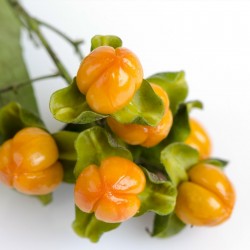

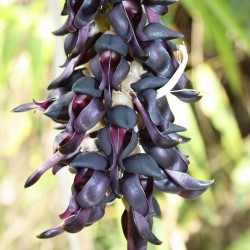
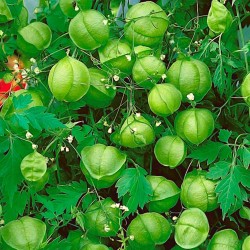
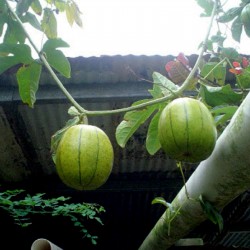
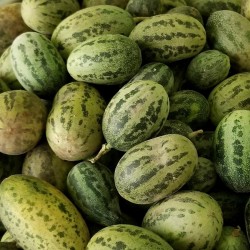
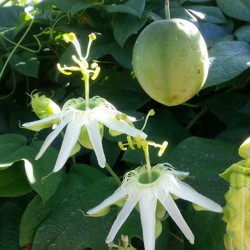
.png)
